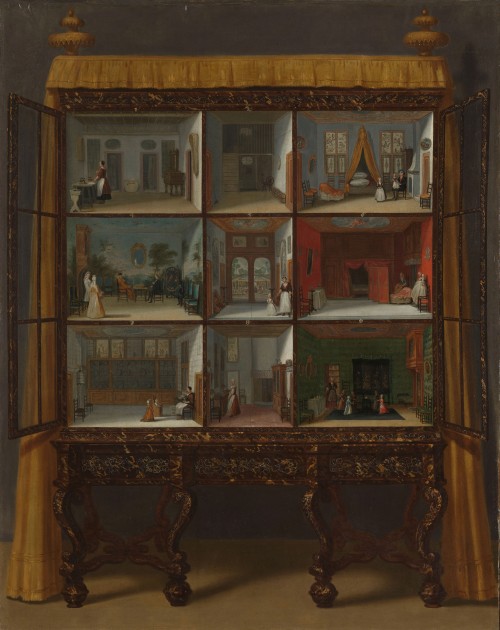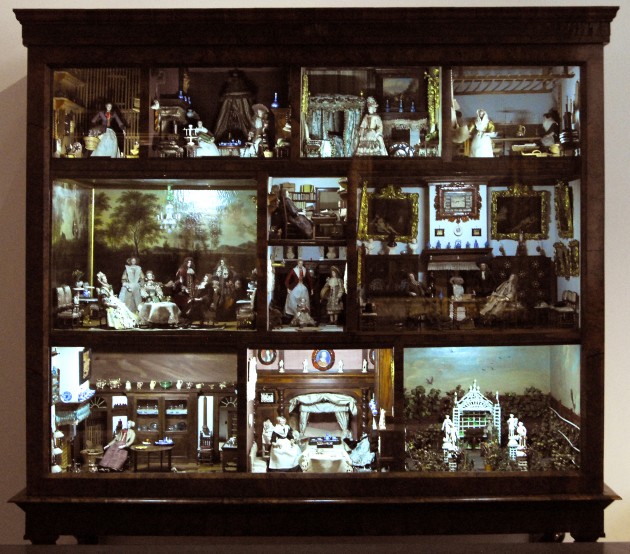Tuesday, January 19th, 2021
Dutch Dollhouses and Miniatures

Jacob Appel, “Doll’s House of Petronella Oortman,” c. 1710. Oil on parchment on canvas. 87 cm × 69 cm. Rijksmuseum
When I watched The Minaturist TV series a few years ago, it didn’t even occur to me to wonder whether the 17th-century doll house was grounded in historical fact. I think that the darker aesthetic and bizarre aspects of the show made me think less about any historical foundation. However, I learned this evening that it there was a small group of adult Dutch women in the 17th and 18th centuries which have miniature houses – these dollhouses and miniatures were usually given in connection with weddings. They weren’t meant to be for children to play with, but were meant for adult collectors to enjoy. You can see some details of one such house that was on display at the MFA in this video.
Curatorial research fellow Courtney Harris explained in another MFA video, “The Dutch Golden Age in Miniature” how these miniature environments were ways for women to enact control over an environment on a small scale. Women were also able to interact with craftsmen to purchase miniature objects and held autonomy over what was placed on display. Women could also control the viewing of the miniature houses by keeping them covered with curtains until an appropriate time to reveal the miniature spaces to guests. One dollhouse, owned by Petronella de la Court, was an exact replica of her own house!

Doll’s house owned by Petronella de la Court, c. 1670-1690. Centraal Museum, Utrecht. Image courtesy Wikipedia
The Rijksmuseum has an interesting painting in their collection which depicts the dollhouse owned by another collector, Petronella Oortman, a woman who “spent vast sums of money on creating and decorating her house” (see image at top of post). The museum also has the actual dollhouse in its collection as well. I am drawn to this painting, though, because it is a miniaturization of the miniature house. The actual house is 255 cm high and 190 cm wide (approx. 8.3′ x 6.2′), whereas the painting is 87 cm and 69 cm wide (approx. 2.9′ x 2.25′). I wonder why this miniature house caught the attention of a male painter, unless this painting was a commission? By painting the miniature objects on an even smaller scale than the actual house, is Jacob Appel attempting to outdo the technical achievements of the craftsmen who made the small objects for the house? Or is Appel’s creation of this painted house intended to rival the Petronella Oortman’s miniature creation?
What a great idea! The beauty of a complete dollhouse, or indeed a painting of one, was that every taste could be tested before the final choices were made. Curtains, wall papers, window shapes, beds, tables and chairs… nothing was fixed until the customers were satisfied.